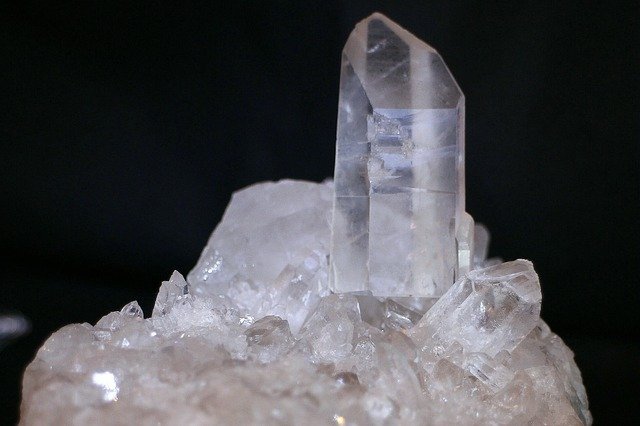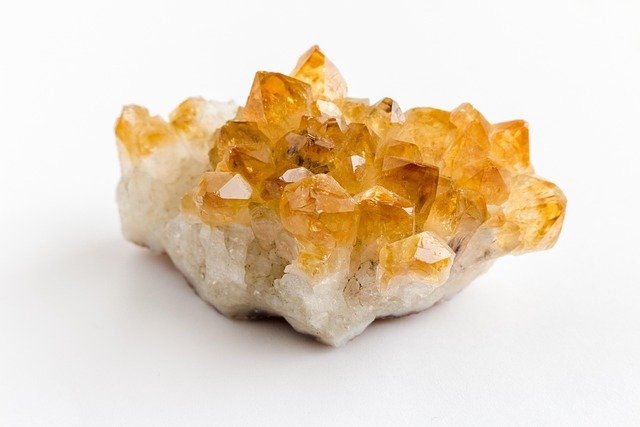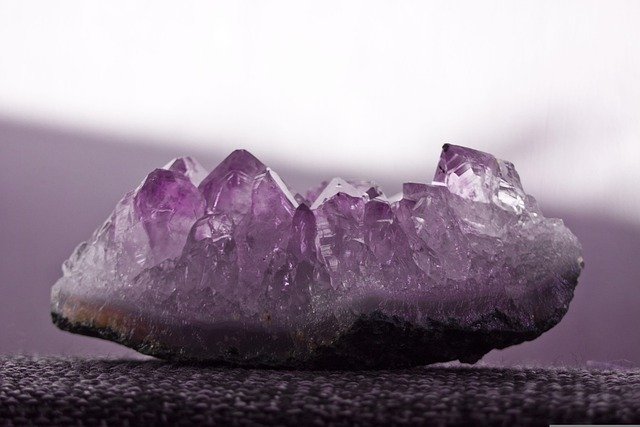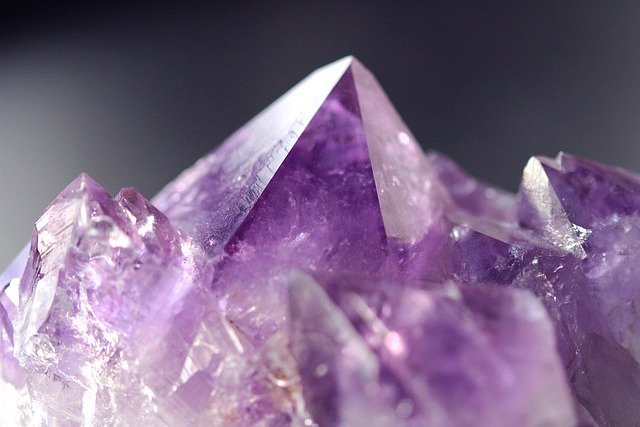Crystals look like something out of a fairy tale—sparkling, sharp-edged, and perfectly shaped. You’ve probably seen them in jewelry, salt, sugar, or even snowflakes. But have you ever wondered what they really are, or how you could grow your own at home?
The truth is, crystals are not just beautiful—they’re science you can hold in your hands. And the best part? With just a few simple things from your kitchen, you can actually make crystals yourself.
In this article, we’ll explore what crystals are, how they form in nature, and how you can create your very own crystals right at home. It’s science, but it feels like magic—and once you try it, you’ll never forget the experience.
What Are Crystals, Really?
Crystals are solids, but they are not just any solids. What makes them special is the way their particles—tiny building blocks like atoms or molecules—are arranged. In a crystal, these particles line up in a repeating, regular pattern. That’s why crystals often have flat faces, sharp edges, and symmetrical shapes.
Think about sugar or salt. If you look closely, each grain is a tiny cube. That’s because the particles inside salt and sugar arrange themselves in neat, cube-like patterns. Diamonds, quartz, and even snowflakes are crystals too. They may look different, but deep down, they all share that same repeating order.
The secret of crystals is this: when certain substances come together and solidify, the particles prefer to “lock” into these neat patterns. It’s like they’re following invisible rules of symmetry. That’s why crystals often look perfect and geometric, even though they form naturally.
Crystals in Everyday Life
You might not realize it, but crystals are everywhere around you.
The sugar you sprinkle on cereal? Crystals. The salt in your kitchen? Crystals. Even the ice cubes in your drink are crystals, because frozen water forms an ordered structure.
Jewels and gemstones, of course, are crystals too. Diamonds are made from carbon atoms arranged in one of the toughest patterns in nature. Quartz, amethyst, and emerald all get their beauty from crystal structures inside the Earth.
Crystals are also inside your body. Bones and teeth contain crystals of calcium. Even the screens on your phone and computer use tiny crystals in liquid crystal displays (LCDs). So crystals are not just pretty—they are part of your daily life in ways you probably never noticed.
How Do Crystals Form in Nature?

Nature makes crystals in many ways. Some form deep underground, where heat and pressure slowly arrange minerals into patterns. That’s how diamonds are born, after years of pressure squeezing carbon atoms together.
Others form when liquids cool down. Lava from volcanoes, when cooled, creates crystals of minerals like quartz or feldspar. Even snowflakes are crystals, created when water vapor in the air freezes into unique six-sided patterns.
The key is always the same: when atoms or molecules get the chance to slow down and settle, they often arrange themselves into the regular, repeating patterns that we call crystals.
Why Crystals Spark Curiosity
There’s something almost magical about crystals. They feel alive, as if nature carved them with perfect tools. For children, they spark curiosity—how can something so regular and perfect come from “just” salt, sugar, or water? For scientists, they’re a window into the hidden rules of matter.
And the best part? You don’t need a volcano or a diamond mine to see how crystals grow. With a little patience, you can grow them right in your kitchen. When you do, you’ll see the same process that nature uses—just sped up and simplified.
How to Grow Crystals at Home
Growing crystals at home is like doing magic with science. It doesn’t require expensive tools or fancy labs—just patience, a curious mind, and some kitchen ingredients. When you set up your little crystal-growing experiment, you’re copying what nature does deep in caves, inside volcanoes, or even in snow clouds. Let’s break it down in a way that makes sense and feels easy.
Preparing the Perfect Solution
The first step is making what scientists call a saturated solution. That simply means mixing a substance (like salt or sugar) into hot water until the water can’t hold any more. Hot water works better than cold because heat gives the water molecules extra energy, letting them hold more dissolved particles.
You know you’re ready when you stir and stir, but no matter how much you try, a little salt or sugar stays at the bottom of the glass. That’s the signal: the water is now “full” and ready to grow crystals.
This solution is the crystal’s “birthplace.” Without it, there’s nothing for the crystal to grow from.
Giving the Crystals a Place to Start
Now imagine you’re trying to build a house. You’d need a foundation, right? Crystals are the same. They need something to attach to, or else they’ll just float around without forming properly. That’s why we use a string, stick, or even a rough surface like a small rock.
By dipping the string into the solution and letting it hang, you’re giving the tiny particles a surface where they can “grab on.” Once a few attach, others follow, stacking up in neat, repeating patterns. Slowly, the structure grows into something you can actually see.
The Waiting Game
This is the part where patience becomes your best friend. Crystals don’t appear instantly. At first, it might look like nothing’s happening. But inside the jar, the water is cooling and slowly evaporating. As this happens, the particles in the solution have less room to stay dissolved.
So where do they go? They look for a home—and the string becomes that home. Over hours and days, more and more particles pile up in their neat little rows, and before you know it, the first tiny crystals appear.
Some kids check their jars every five minutes and feel disappointed. Don’t worry—science takes time. If you wait overnight, you’ll start to see small crystals forming. Leave it for a week, and you’ll be amazed by how big they’ve grown.
The Big Reveal
When you finally pull out the string, it’s like unveiling treasure. Tiny cubes, sparkling clumps, or even needle-like crystals will be clinging to it. They’re fragile but beautiful, and the best part is—you made them. You just copied what nature has been doing for millions of years, only in a glass on your kitchen counter.
It feels magical, but it’s pure science: particles arranging themselves into perfect patterns, right before your eyes.
The Science Behind Crystals

When you grow crystals at home, you’re really watching a natural process called crystallization. This happens when particles—like salt or sugar molecules—line up in neat, repeating patterns as they change from a dissolved state (in water) into a solid state.
Think of it this way: in the hot water, the molecules are swimming around freely, bumping and moving without much order. But as the water cools or evaporates, these molecules slow down. When they slow down, they prefer to “lock” into structured positions, like puzzle pieces snapping together.
That’s why you see crystals forming sharp edges, flat faces, or cube-like shapes. Each type of substance has its own “favorite” pattern. Salt likes to form cubes, sugar often creates sparkly clumps, and Epsom salts form needle-like shapes.
Crystals look beautiful because nature’s invisible rules are playing out in a visible way. What was once random becomes organized, and our eyes get to enjoy the perfect geometry of science.
How to Make Crystals Grow Bigger
Now here’s the fun part—there are little tricks you can use to make your crystals even larger and more impressive.
1. Use very hot water at the start.
The hotter the water, the more salt or sugar it can hold. More dissolved material means more building blocks for your crystals.
2. Be patient and let the water evaporate slowly.
If the water dries up too quickly, you’ll get lots of tiny crystals. But if evaporation is slow, fewer crystals grow, but they have more time and space to become bigger.
3. Keep the jar in a quiet place.
If the jar is bumped or shaken, it can disturb the growing process. A calm, still environment lets crystals grow undisturbed.
4. Try a seed crystal.
If you tie a small grain of salt or sugar to your string before dipping it into the solution, it acts as a starter crystal. The other particles will see it as a “model” and build onto it, often making larger shapes.
5. Give it time.
The most important ingredient for big crystals isn’t salt, sugar, or water—it’s patience. The longer you wait, the larger your crystals will grow.
Crystals and Colors
Here’s another fun twist: you can add food coloring to your solution before growing crystals. The color doesn’t change the way crystals grow, but it makes them look magical—blue salt cubes, red sugar clumps, or green sparkly Epsom salt needles.
This doesn’t just make them prettier. It also shows kids that science is not boring—it can be playful, creative, and full of wonder.
Crystals in Nature

When you grow crystals at home, you’re copying what the Earth has been doing for millions of years. Crystals form naturally whenever the right conditions come together—heat, pressure, evaporation, or cooling. And the results are breathtaking.
Deep inside the Earth, crystals are born under extreme pressure and heat. Diamonds, for example, are made entirely of carbon atoms squeezed together so tightly that they form one of the hardest structures in nature. It takes millions of years for diamonds to form, but their sparkle shows the power of Earth’s natural chemistry.
In volcanoes, when hot lava cools, minerals inside it start to crystallize. This creates stones like quartz, feldspar, and even beautiful gems like amethyst. The slower the lava cools, the bigger the crystals that form. That’s the same principle you see at home—slow growth means bigger crystals.
Even in the sky, crystals appear. Snowflakes are crystals of frozen water, each one shaped by temperature and humidity as it falls. No two are exactly alike, but they all follow the same six-sided symmetry rule of ice crystals. The fact that a snowflake can drift down, carrying a tiny piece of geometry in its pattern, shows how magical crystals really are.
Crystals in Everyday Life
Crystals aren’t just in caves and volcanoes—they’re all around you, often in surprising ways. The salt you sprinkle on food, the sugar in your tea, even the ice cubes in your glass are all examples of crystals.
Your body is full of crystals too. The enamel on your teeth is made of tiny crystals of calcium phosphate, giving them strength. Bones also depend on crystals for structure. Without these natural crystals, your body wouldn’t be strong enough to stand or chew.
Technology uses crystals everywhere. The screens on your phone and TV are made with liquid crystals, which can change how they line up when electricity passes through them. Quartz crystals are used in watches and clocks because they vibrate at a steady rhythm, keeping perfect time.
Even medicines can be crystal-like. Certain drugs are crystallized so they dissolve slowly in the body, releasing healing power over time.
So crystals are not just beautiful decorations or rare gemstones—they are working silently in our kitchens, our bodies, and our technology every single day.
Why Nature Loves Crystals
There’s a reason crystals form so often in nature: they are stable and efficient. When atoms or molecules arrange into repeating patterns, they use less energy than when they’re random. Nature always chooses the easiest, most balanced way. That’s why crystals appear everywhere—from salt flats to mountain caves to icy clouds.
And because they’re stable, crystals can last. A diamond formed millions of years ago still shines today. A piece of quartz can survive heat, pressure, and time, carrying the story of Earth’s history inside it.
Why Crystals Fascinate Us

There’s something about crystals that captures the human imagination. From the moment people first found shiny stones in the earth, crystals have been seen as magical, mysterious, and valuable. Ancient cultures wore them as jewelry, carved them into tools, and even believed they carried special powers.
Part of the fascination is their beauty. Crystals often sparkle when light hits them, and their sharp edges and perfect shapes look too precise to be natural. To the human eye, they seem almost like they’ve been carved by hand. But in truth, their perfection comes from the natural laws of science, not from human tools.
Another reason crystals are so captivating is their rarity. While salt and sugar are common, gems like emeralds, sapphires, and diamonds are rare. Their scarcity, along with their brilliance, makes them treasures. Even today, people give diamonds to show love, and amethysts are worn as symbols of calmness and clarity.
But beyond beauty and symbolism, crystals also fascinate us because they reveal a hidden order in the universe. They prove that even in the chaos of lava, storms, or cooling water, there are rules that nature follows—rules that create order, symmetry, and balance.
Crystals as a Window Into Science
For children, crystals are one of the best ways to spark curiosity in science. They are hands-on, visual, and rewarding. A child can see the process, touch the results, and marvel at the beauty of something they created themselves.
When kids grow crystals at home, they aren’t just making something pretty—they are witnessing atoms arranging themselves into patterns. They are learning about solutions, evaporation, energy, and geometry, all in one simple experiment. Science stops being abstract. It becomes real, touchable, and exciting.
And because crystals grow slowly, they also teach patience. Children learn that nature works at its own pace. Waiting for a crystal to form builds focus and appreciation for how the smallest changes over time can create something amazing.
This combination of wonder, learning, and patience is exactly why crystals are such a powerful tool for teaching science.
How Debsie Helps Kids Explore Crystals

At Debsie, we know that crystals are more than shiny objects. They are one of the easiest and most exciting ways to bring science into a child’s hands. Instead of just reading about them in a textbook, children at Debsie actually see them, grow them, and understand the science behind them. That’s what makes learning powerful—it becomes something a child can touch, not just something they memorize.
Turning Curiosity Into Discovery
Children are naturally drawn to crystals. The sparkle, the sharp edges, the mystery of how they grow—it feels magical. At Debsie, we take that natural curiosity and guide it toward discovery. Our teachers don’t just tell kids what a crystal is. They let them ask, “Why does salt make cubes? Why does sugar look different?” and then help them explore the answers step by step.
Through experiments and clear explanations, children see the invisible rules of matter becoming visible in front of their eyes. What starts as a simple jar of salt water becomes a science lesson they’ll remember forever.
Learning at Every Level
The magic of Debsie is that we meet children exactly where they are. For younger kids, crystal lessons are simple and playful—growing salt or sugar crystals at home and learning that particles line up into neat patterns. For older students, the lessons become deeper. They might explore how temperature affects crystal growth, why different substances make different shapes, or how crystals are used in technology.
This layered approach means a child can grow with us. What begins as a fun experiment at age seven can turn into real chemistry knowledge at age fifteen. By the time they’re older, they don’t just know what a crystal is—they understand the science behind it with real confidence.
Teachers Who Make Science Feel Simple
Our partner teachers are experts, but more importantly, they know how to explain science in the simplest words possible. Crystallization might sound like a big word, but when a teacher shows a child that it simply means “molecules locking together in patterns,” the mystery disappears and understanding begins.
This is the Debsie way: break big science ideas into bite-sized lessons, connect them to real life, and let kids experience them hands-on. That’s how we turn confusion into clarity and hesitation into excitement.
Beyond Science—Building Life Skills
Growing crystals teaches more than chemistry. It teaches patience, because crystals don’t appear instantly. It teaches observation, because children must notice the small changes each day. It teaches responsibility, because they must care for their experiment over time.
At Debsie, we believe these are the life skills that truly matter. Science is the doorway, but the lessons go far beyond. A child who learns to wait, watch, and think carefully while crystals grow is building the same focus and resilience they will use in every part of life.
Final Thoughts: Crystals, Curiosity, and the Joy of Learning
Crystals may look like magic, but now you know they are pure science—tiny particles coming together in perfect harmony to form shapes that sparkle and amaze. From salt on your table to diamonds deep in the earth, crystals are everywhere, reminding us that the world is full of hidden wonders waiting to be discovered.
When children learn about crystals, they aren’t just learning about solids or patterns. They’re learning patience, curiosity, and the joy of discovery. They’re seeing that science isn’t something distant—it’s something alive, real, and part of their everyday world.
At Debsie, this is exactly what we do. We take the mysteries of nature, like crystals, and make them simple, exciting, and unforgettable. Our teachers guide children step by step, turning curiosity into confidence and learning into love. We help kids see science not as a subject to study, but as a story they are part of.
If you want your child to feel this joy of discovery, to grow smarter and more confident every day, Debsie is ready to help.
👉 Book a free trial class today
👉 Explore all our fun and expert-led courses for kids aged 5–18
Because the most beautiful crystal of all is a curious mind that keeps growing.
Read Next:
